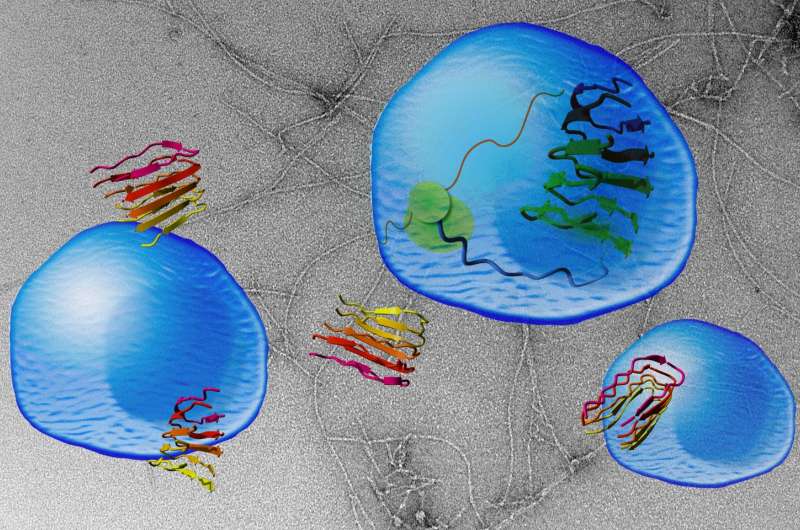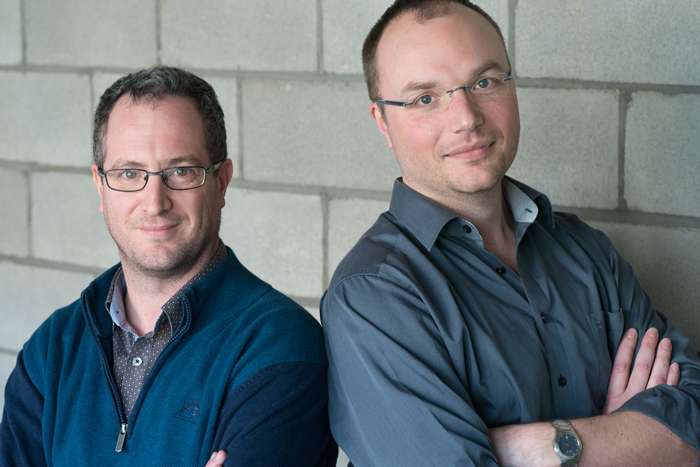Catching a tumor in a spider's web

After a decade of research, the Belgian Switch Laboratory (VIB/KU Leuven) has revealed a new designer molecule that inhibits a well-validated cancer driver through the mechanism of amyloid formation. This work demonstrates that amyloid structures can be used to rationally develop a novel class of biotechnological molecules that are able to fight a wide array of diseases. After the publication of this research in the leading journal Science, next steps to translate this groundbreaking technology, branded Pept-in into direct benefits for patients are already being explored by VIB.
Proteins in boiled eggs, beer foam and spider silk all share a similar structural element: amyloid. These structures are active in humans as well, playing a role in processes such as melanin production and cellular hormone storage. However, amyloids are also associated with diseases like cataracts, Alzheimer's and blood clotting disorders. The Switch Laboratory, led by professors Frederic Rousseau and Joost Schymkowitz, has now invented a design principle that could be used to destroy the function of virtually any protein based on the properties of amyloids.
Catching tumors
The first validated result of this new technology is called vascin, a designer amyloid that targets a well-known cancer target. In short, vascin penetrates a cell, and induces the formation of protein aggregates of its target protein, VEGFR2. These 'clumps' are the result of VEGFR2 protein that started sticking together, making it nonfunctional. Because VEGFR2 is crucial to the survival of certain cancer types, its inactivation kills the cancer cells and stops the tumor's growth.
Prof. Frederic Rousseau (VIB-KU Leuven): "One could compare it to 'catching tumors in a spider's web'. By artificially imitating the formation of protein clumps, we can inhibit molecules that play a central role in several diseases. Because these principles apply to virtually any protein, our approach may not only be useful in developing future cancer therapies, but also in treating drug-resistant infections."
Validated technology
The invention of the Pept-in technology dates back several years and is subject to broad patent protection. Meanwhile, the Switch Lab, in collaboration with several other research groups, has shown that this technology could have many applications, from treating superbug and fungal infections to engineering improved crops.

Prof. Joost Schymkowitz (VIB-KU Leuven): "Although we don't yet know if functional amyloids could be used in humans for therapeutic applications, the potential for novel drugs is huge. Our team will now spend the coming years trying to turn this into direct benefits for patients."
New business strategies
In close collaboration with the Switch Lab, VIB's tech transfer team is actively pursuing the translation of this fine piece of top science into societal value.
Dr. Els Beirnaert (Senior Manager New Ventures VIB): "This technology differentiates itself in many aspects from competing platforms. Its novel mode of action, its designability and potential to knock down challenging intracellular disease targets make this designer technology an attractive basis for the development of novel groundbreaking medicines for a variety of diseases."
More information: "De novo design of a biologically active amyloid," Science, science.sciencemag.org/cgi/doi … 1126/science.aah4949


















